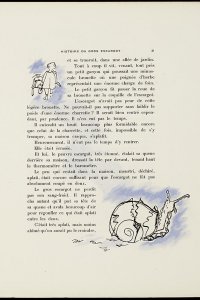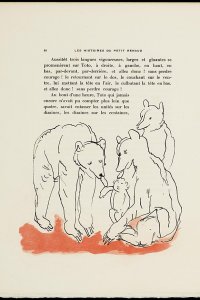Les histoires du petit Renaud
Year: 1926
Author: Leopold Chauveau (1870 - 1940)
Artist: Pierre Bonnard (1867 - 1947)
Publisher: Librairie Gallimard
Bibliographical description
Description: Les histoires du petit Renaud / [rec. par Leopold Chauveau ; et enrichies d'ill. dessinées et coloriées par Pierre Bonnard]. - Paris : Librairie Gallimard, 1926. - 89 p. : ill. ; 29 cm
Printer: F. Paillart (Abbeville (Somme))
Edition: 344 copies
This copy: Number 22 of 322 on Arches
Bibliography: Bénézit 2-529 ; Carteret V-48 ; Mahé I-492 ; Monod 2715
Shelfmark: KW Koopm K 143
References
- Bonnard. Paris, Braun, 1946
- Léopold Chauveau, Histoire de Roitelet. Amsterdam, Meulenhoff, 1936
- Pierre Courthion, Bonnard, peintre du merveilleux. Lausanne, Marguerat, 1945
- Elisabeth Hutton Turner, Pierre Bonnard: Early and late. London, Wilson, 2002
- Timothy Hyman, Bonnard. London, Thames and Hudson, 1998
- Suzanne Page, Pierre Bonnard: The work of art: Suspending time. Paris, Paris-Musées, 2006
- Annette Vaillant, Bonnard, ou le bonheur de voir. Neuchâtel, Editions Ides et Calendes, 1965

![Les histoires du petit Renaud, oplageverantwoording en eerste tekstpagina (p. [7])](/sites/default/files/styles/galerie/public/images/les-histoires-du-petit-renaud-oplageverantwoording.jpg?h=dbb2110c&itok=Z5lLkxq8)

